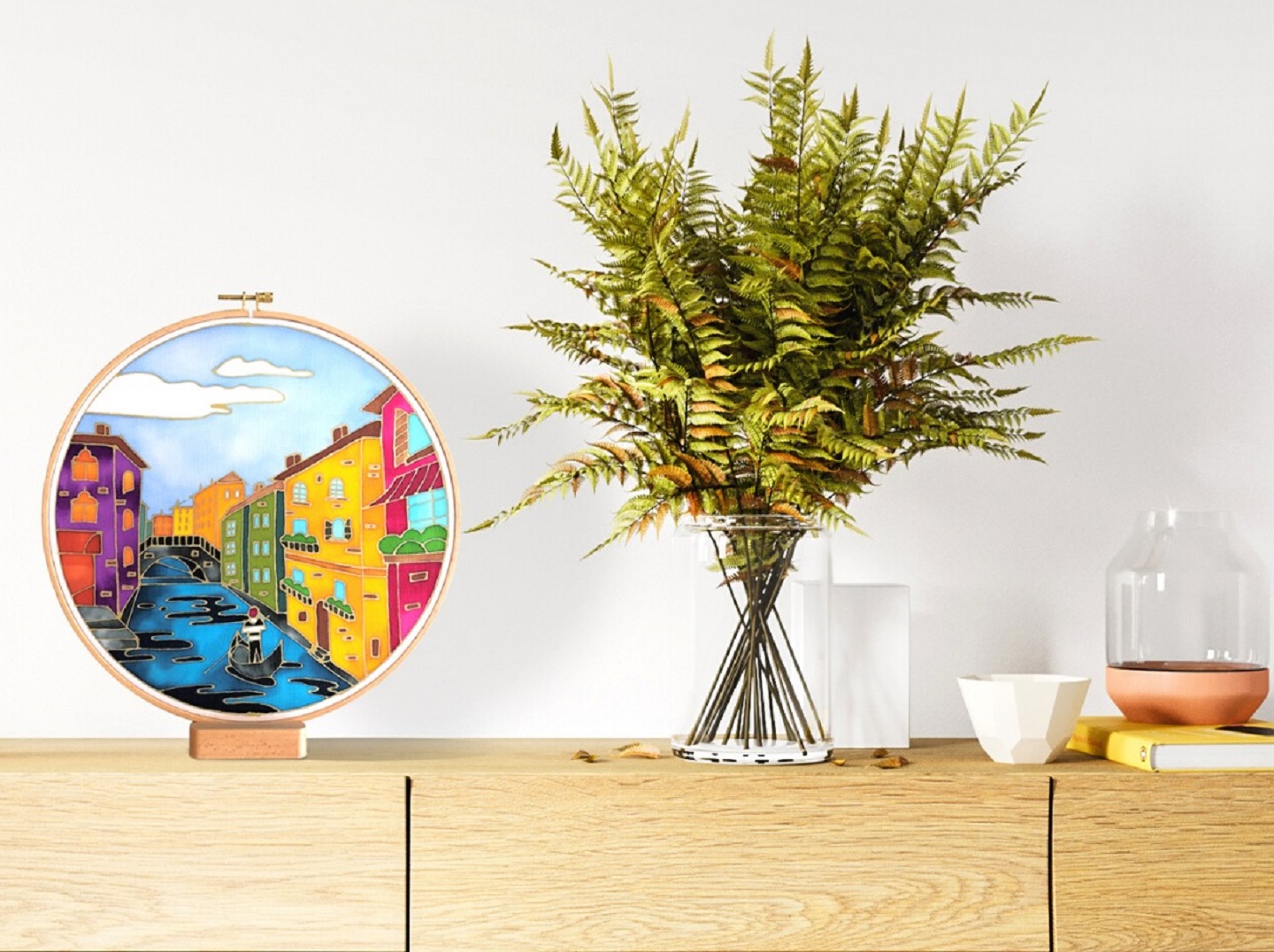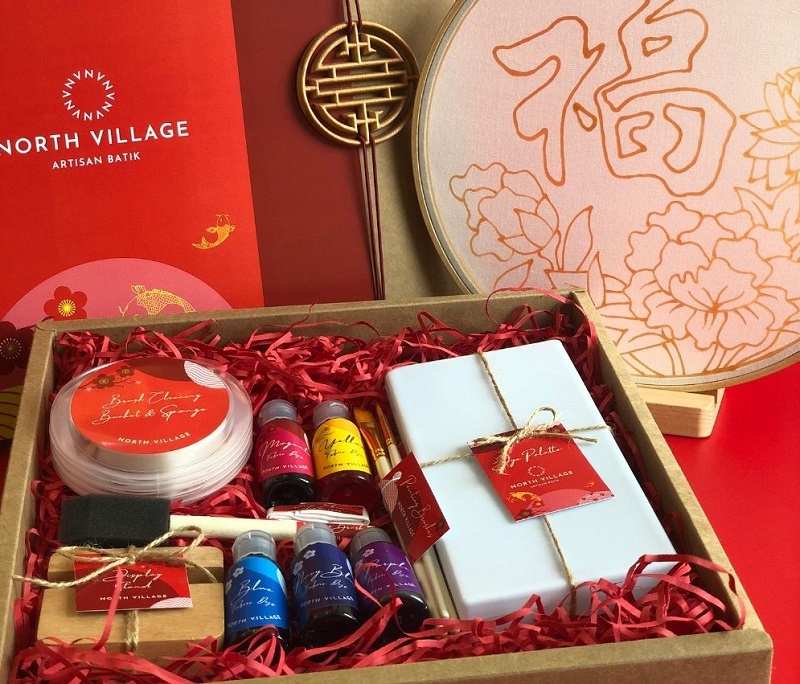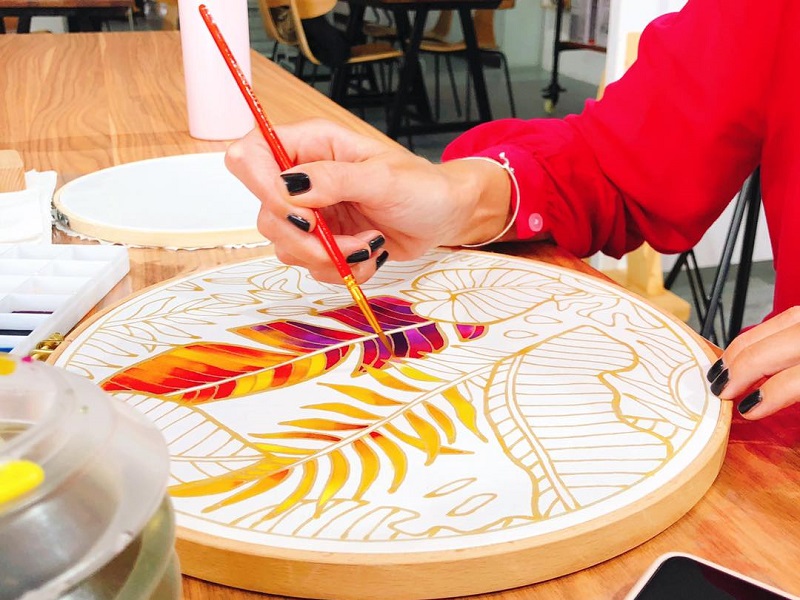
The beauty of canting batik is that it is therapeutic (All photos: North Village)
Before the pandemic, Heng Cindy often attended weekend workshops to unwind with friends. One of the activities she enjoyed was canting batik, in which hot liquid wax is applied using a pen-like tool to draw patterns or pictures. “When I tried my hand at it, I immediately fell in love. The beauty of canting batik is that it is therapeutic. The way dyes spread out on the fabric is very relaxing visually.”
When Covid hit, Heng used her free time at home to practise the skill, buying the materials needed on Shopee. She realised that even though batik is part of Malaysian culture, there was still a lack of learning materials on the internet. People always had to sign up for workshops if they wanted to pick up the art.
Heng duly took matters into her own hands by starting North Village — “I come from a small kampung in Penang and want to be reminded of my roots” — in late 2021, creating batik painting kits to make the craft more accessible to the general public, especially the younger generation.
With information not easily available, she experimented with the kit for a year, from working on the wax to finding the right fabric and dyes, before she was satisfied with the outcome. “It took me a long time to finalise the wax blend, particularly because it is the most important part of the craft. Different blends give different results. Every batik artisan has their own recipes so we incorporate what we feel works for us.”
profile_1.jpg

The 40-year-old is blessed to have a group of friends who encouraged her to pursue the business by trying out the kit themselves and helping spread the word to their acquaintances. “When strangers started ordering, I had to come up with attractive packaging. That was the start of my journey in curating the batik kit to make it convenient for people to use it at home.”
Among the tools provided in the set are a pre-waxed batik design, a palette of 24 wells, paintbrushes and dyes. All of these are packaged in a reusable box. Customers who wish to showcase their painting can opt for a selection with a display stand.
Canting batik is difficult to learn and time-consuming, says Heng. “It is a skill that takes years to develop. Personally, I have been doing it every day for six to seven hours in the last two years. We sell decorative pieces. So we have to make sure the quality is good and the lines are clean.” While she draws the patterns using the canting herself, she hopes to find someone who is willing to learn and can help her with the task as orders keep growing by the day.
Designing, Heng shares, is not something she is good at. A friend stepped in to offer her expertise in creating attractive drawings and patterns. “At the moment, most of my designs don’t have the traditional batik elements. We have themes such as botanical, travelling and mandala. The contemporary style is relatable to the young.” Having said that, she tries to incorporate traditional features such as dots, highlighting the “tik” in batik, which comes from the word nitik. Membuat titik means to make dots in Malay.
cny.jpg

The travelling theme is especially close to her heart as she used to do a lot of it in her previous job. “Going somewhere new is always exciting to me. During the MCO, we could not go anywhere. So the idea was to let people paint a place that brings back memories or one they dream of visiting someday.
“A friend’s father was diagnosed with dementia. Both of them love Paris and have a good recollection of the city. So she asked me if I could do something that might remind him of Paris since dementia patients have the tendency to remember something from a while ago. That inspired me to do the travel series.”
Depending on the design, the canting work for each piece can take up to two hours. Other processes include washing the fabric, tracing patterns using coloured pencils, mounting the material onto the wooden frame and mixing powdered dyes to produce the solutions.
One of the challenging aspects of running the business is educating customers about canting batik. “They ask questions like what it is and what they can do with it. Most people think they cannot paint batik because they feel intimidated by the craft and don’t know where to start. But once they try, they actually enjoy it.”
painting.jpg

Heng’s efforts at spreading batik knowledge include organising workshops for small groups and corporate companies, and participating in bazaars every three months. “Sometimes, friends and families want to do an activity together so I will go to their place and teach. It is also great for team building because painting batik is not complicated. You can still interact with other people while checking on each other’s work. It helps establish relationships.
“The main purpose of this business is for people to relax by painting batik pieces. The activity takes your mind off heavy thoughts because it is slow and therefore therapeutic. We want people to be happy while learning about the art, which is very important to our culture.”
This article first appeared on Jan 30, 2023 in The Edge Malaysia.


